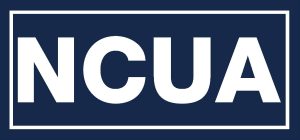If you’ve built up some equity in your home, you might be thinking about tapping into the cash to fund renovations and anything else you have on your plate. You might also be wondering how a home equity line of credit works.
A home equity line of credit from TEG Federal Credit Union gives you a handy source of credit to use however you want, whenever you want.
The best part is, you only pay interest when you use the funds and you get to choose how much you pay back each month, just like for a credit card. Read on for details!
How Do Home Equity Lines of Credit Work?
Home equity lines of credit (HELOC) work in a similar way to a credit card. Both of these useful financial products are known as revolving credit because you get to use funds and make payments in an open-ended cycle.
Here’s how a home equity line of credit works:
- You get a credit limit based on how much equity you have in your home.
- You get a draw period, which is the total amount of time you can use the funds.
- You can use as much or as little of the funds at any one time.
- You pay interest only on the portion of the funds you use.
How to Use a Home Equity Line of Credit
A HELOC is here to support you and your family in any way you need. Many people choose to use a home equity line of credit to pay for home renovations because you can access funds for a major remodel or for small, ongoing improvements.
When you use a HELOC to improve your home, the interest may be tax-deductible. It’s a good idea to draw funds for one purpose at a time and keep detailed records so you can make the most of these tax advantages.
Ways you can use your HELOC:
- Home renovations, remodeling, or repairs
- Replacing or repairing appliances
- Vehicle maintenance and repairs
- Weddings, vacations, and other special events
- Debt consolidation of high-interest credit cards and loans
- Medical bills, expenses, and other emergencies
- Investment capital for a new business or property
How to Pay Off a Home Equity Line of Credit
Paying off a HELOC is just like paying off a credit card. Each month, you’ll get a statement showing your balance of funds plus interest.
Depending on your budget that month, you can choose to pay:
- The balance plus any interest that accrued since last billing period in full*
- A partial payment of however much you can afford
- The minimum amount due
You can also choose whether you pay in person at your favorite local branch, by phone, by mail, or through online or mobile banking using your TEGFCU account.
*If balance is to zero balance in the first 3 years, loan will be subject to $750 closing cost recapture
How to Get a Home Equity Line of Credit
A HELOC is sometimes called a second mortgage because you’re borrowing against the value of your home. When you apply for a home equity line of credit, you’ll need to provide much of the same information that you provided when you got your original home loan.
You may need these documents to get a HELOC:
- Mortgage statement
- Property tax bill
- Homeowner’s insurance policy
- Government-issued ID and Social Security number
- Evidence of household income
- Evidence of any debts or outstanding balances
What’s the Maximum Loan Amount for a HELOC?
The maximum amount you can borrow will depend on how much equity you have in your home.
To calculate your equity, take the current market value of your home and subtract your mortgage balance. Then you need to do a little more math to see how much you could access through a HELOC.
Here’s an example of some HELOC number crunching:
- If your home is worth $300,000 and you owe $200,000 on your mortgage, then you have $100,000 of home equity.
- A HELOC might let you borrow up to 85% of the value of your home, minus the balance on your mortgage.
- So 85% of your $300,000 home value is $255,000 then you subtract your $200,000 mortgage balance and see you could get a HELOC of up to $55,000.
How Does a HELOC Impact My Credit Score?
First things first, your credit needs to be in good shape to qualify for a HELOC because we want to make sure you can comfortably afford your payments. In addition, your credit score will determine the rate we can offer you. The higher your score, the lower your rate!
Here’s how to boost your credit once you get your HELOC:
- Always make timely payments of at least your minimum amount due as your payment history is a big part of your credit score.
- Try to use less than 30% of your total available credit across all sources, including your HELOC and credit cards. That is, avoid maxing out your credit.
What’s the Difference Between a HELOC and a Home Equity Loan?
Both these home equity options are useful ways to fund home renovations and meet other expenses. But there are a few key differences between them:
- A HELOC gives you a line of credit and you choose how much you use, whereas a home equity loan gives you a lump sum payment.
- HELOC monthly payments will go up and down depending on how much funds you use, whereas home equity loan payments are the same every month.
- With a HELOC, you only pay interest on the funds you use, whereas you pay a fixed amount of interest every month on a home equity loan.
- HELOC interest rates tend to be variable while home equity loan rates are usually fixed–and HELOC rates tend to be lower.
Learn More About How a Home Equity Line of Credit Works
Now that you’re up to speed on the ins and outs of a TEGFCU home equity line of credit, you might want to dive deeper into our rates and terms.
We offer both HELOCs and home equity loans so members like you can access the funds you need to achieve your goals–or just relax knowing you have a rainy day fund. At TEG we pay normal and customary closing costs, with exception of prepaid interest, hazard and flood insurance and real estate taxes. Click below for details!













